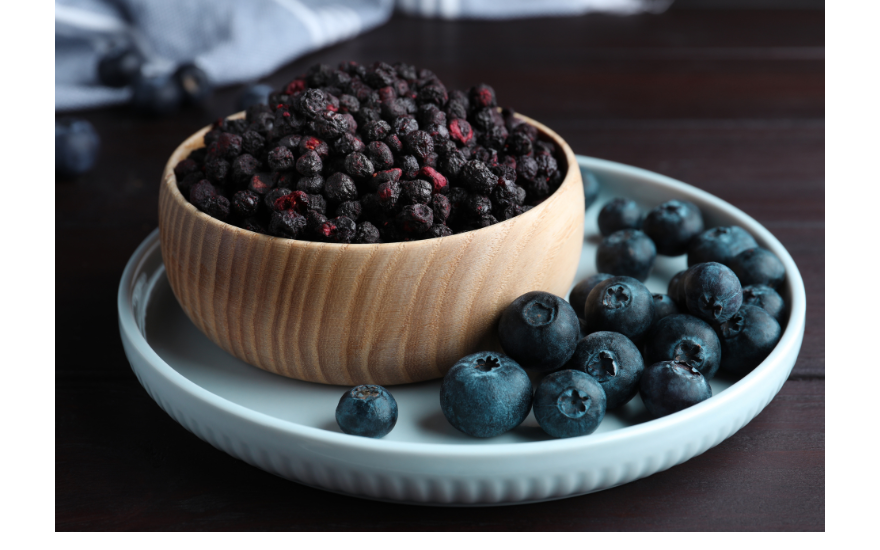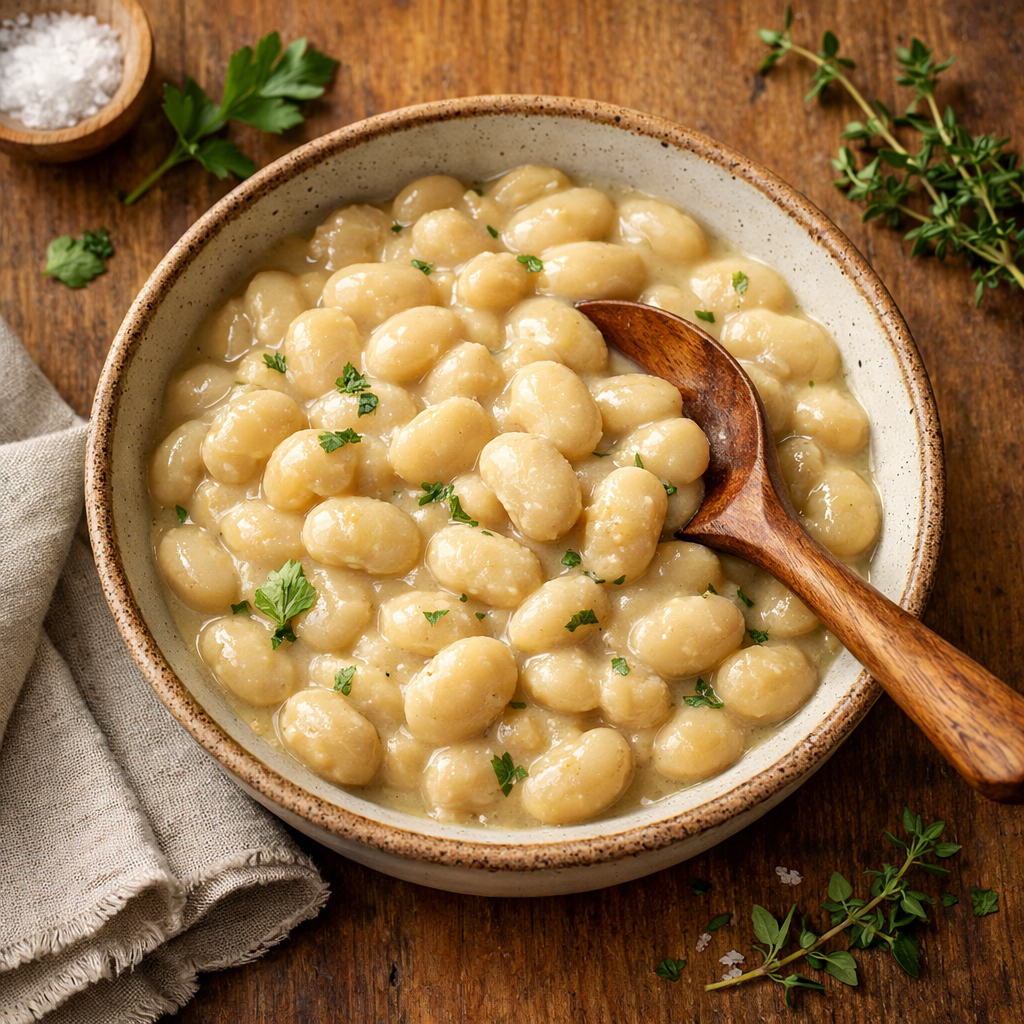I’ve always been fascinated by food preservation methods, particularly the process of freeze-drying, which locks in flavor and nutrients for long-term storage. Freeze-dried blueberries are a prime example of how this technology can be harnessed to enjoy the taste and health benefits of fresh berries year-round. The water is removed from the blueberries, leaving behind a light, crunchy texture that preserves the original shape and color of the fresh fruit.

As a healthy, convenient snack, the freeze-dried berries retain most of the nutrients found in their fresh counterpart. They are rich in antioxidants, vitamin C, and dietary fiber. Due to the removal of water, the flavors are concentrated, making them an intensely flavored, sweet treat. Additionally, these berries can be added to a variety of dishes, from morning cereals to decadent desserts, enhancing both the taste and nutritional value of meals.
Key Takeaways
- Freeze drying preserves blueberries’ shape and nutrients, providing a year-round snack option.
- These berries are rich in antioxidants and vitamins and have a concentrated flavor.
- They are versatile in recipes and easy to store without needing refrigeration.
Understanding Freeze-Drying
Freeze-drying is a preservation method that removes moisture from food items, like blueberries, to extend their shelf life while preserving texture and nutrients.
The Freeze-Drying Process
In freeze-drying, blueberries are first frozen, which converts their moisture content into ice. Next, they are placed in a freeze dryer where the machine operator lowers the pressure in the chamber and applies heat. This causes the ice to sublimate, turning directly from solid to gas without becoming liquid. This leaves the blueberries dry but structurally intact.
Benefits of Freeze-Drying Over Other Methods
Compared to traditional drying methods, freeze-drying retains the fruit’s shape, color, and most importantly, its nutrients. Because the process involves low heat, freeze-dried berries are similar in nutritional value to fresh ones. The resulting product is light, crisp, and can be rehydrated quickly. This drying method also remarkably extends the shelf life, preserving the fruits’ taste and benefits, a point highlighted by studies on the storage conditions of freeze-dried fruits. Additionally, freeze-drying transforms the blueberries into a powder effortlessly, making them versatile for various food applications.
Nutritional Profile of Freeze-Dried Blueberries

In assessing the benefits of freeze-dried blueberries, it’s vital to consider their rich vitamin and mineral content, alongside the abundance of fiber and antioxidants they offer. These nutritional elements play an important role in a healthy diet.
Vitamin and Mineral Content
Freeze-dried blueberries are a nutritious snack, low in calories yet high in essential nutrients. Notably, they retain most of their original content of vitamins A, C, and B-6 after the freeze-drying process. Although water content is significantly reduced, which increases the concentration of these vitamins per ounce compared to their fresh counterparts. As part of a 2,000 calorie diet, incorporating these blueberries can contribute to the recommended daily intake of these vital nutrients.
Fiber and Antioxidants
The fiber content in freeze-dried blueberries remains relatively unchanged from their fresh form, supporting healthy digestion. Antioxidants, particularly anthocyanins which give blueberries their distinctive color, are preserved through freeze-drying. Antioxidants are essential for neutralizing free radicals in the body, and freeze-drying ensures that blueberries maintain their antioxidant power. Including them in my diet offers not just a delicious taste but also dietary benefits that may help protect against disease and promote overall health.
Incorporating Freeze-Dried Blueberries Into Your Diet
Freeze-dried blueberries offer versatility and a concentrated burst of flavor and nutrients, making them an excellent choice for enhancing various meals and snacks throughout the day.
Everyday Recipes
Start your morning with a refreshing smoothie; blend a handful of the blueberries with your choice of yogurt and a frozen banana for a nutrient-rich drink. Mix these berries into pancakes or waffles to elevate their sweetness and add a pop of color. You can also sprinkle them onto your cereal for a twist on a classic breakfast.
When it comes to lunch, toss a few freeze-dried blueberries into a salad for a fruity contrast to the savory flavors. They also marry well with the textures of nuts and seeds, making your greens more exciting.
Creative Uses for Freeze-Dried Blueberries
Moving beyond the basics, infuse trail mix with the blueberries for a snack that’s both satisfying and full of antioxidants. Salads spring to life with their tangy crunch, making them a staple for a balanced diet. And when it comes to baking, incorporating freeze-dried blueberries adds a new dimension of flavor to muffins, breads, and desserts without the moisture of fresh berries.
You can also grind these berries into a powder to use as a natural colorant or flavor booster in icing, candy, or homemade granola bars. Whether garnishing desserts or reinventing classic baking recipes, blueberries are a convenient and innovative ingredient to have on hand.
Storing and Preserving Freeze-Dried Blueberries
I understand that properly storing and preserving freeze-dried blueberries is crucial to maintaining their quality and nutritional value. When done correctly, these berries can provide long-lasting, convenient, and healthy options whether they’re part of my emergency food supply, snacks for hiking trips, or ingredients in my daily cooking.
Best Practices for Storage
To ensure my freeze-dried blueberries last as long as possible, I always store them in an airtight container. To prevent the berries from spoiling, it’s critical to create an environment that minimizes the presence of moisture content and oxygen. Some effective storage options I use include:
- Vacuum-sealed bags: These remove much of the oxygen, which helps prevent spoilage.
- Containers with tight-fitting lids: I prefer clear containers so I can easily view my supplies while keeping them in a dark place away from direct light.
Extending Shelf Life
To further extend the shelf life of my blueberries, I take these additional steps:
- Incorporate oxygen absorbers: Adding these packets to my storage containers helps remove any residual oxygen, thereby reducing the risk of oxidation and spoilage.
- I control the storage climate by keeping my blueberries in a cool, dry place, away from heat sources or potential moisture ingress.
By adhering to these methods, I’m confident in preserving the food in a state that maintains taste, texture, and nutritional content for a long time.
Potential Risks and Considerations

When incorporating freeze-dried blueberries into your diet, it’s imperative to consider certain factors that could affect your health or preferences. These include examining the product’s additives and sugar content, understanding any allergy implications, and aligning with dietary restrictions.
Understanding Additives and Sugar Content
Freeze-dried blueberries offer convenience and a long shelf life, but always check the label for additives that manufacturers may use to preserve color and flavor. Often, added sugar can significantly increase the calorie count, which may not align with everyone’s dietary goals. For individuals monitoring sugar intake, selecting blueberries that have no added sugars is crucial to maintaining a balanced diet. Research shows that different freeze-drying conditions can affect the nutritional properties such as ascorbic acid and polyphenols.
Allergy Information and Dietary Restrictions
While not common, some individuals may experience an allergy to blueberries or components used in the freeze-drying process. It’s essential to review ingredient lists to ensure they fit within any dietary restrictions you may have. For those with specific dietary practices, such as a kosher diet, confirming that the product meets these standards is necessary. Additionally, wild-harvested blueberries may appeal to those seeking a more natural product, though the collection and processing methods required often result in higher costs.
Frequently Asked Questions
In this section, I’ll address some common queries related to freeze-dried blueberries, focusing on their benefits, culinary uses, quality, shelf life, nutritional value, and rehydration.
What are the benefits of consuming freeze-dried blueberries?
The blueberries offer a convenient way to enjoy the fruit’s nutrients year-round. They’re lightweight, have an extended shelf life, and maintain a significant amount of their original antioxidants and vitamins. Long-term storage and portability make them ideal for various lifestyle needs.
How can you incorporate freeze-dried blueberries into recipes?
You can use freeze-dried blueberries just like fresh ones—add them to breakfast cereals, smoothies, and baked goods, or mix them into yogurts and salads for an extra burst of flavor and nutrients. Creative cooking with freeze-dried blueberries opens up a range of gourmet possibilities.
Which brands offer the best quality freeze-dried blueberries?
Freeze-drying blueberries shortly after harvest often yields the best quality, preserving the most nutrients. Look for brands that use whole, ripe berries and avoid adding preservatives or sugars.
What is the shelf life of freeze-dried blueberries when stored properly?
Properly stored dried blueberries can last up to 25 years without significant degradation of flavor or nutrients. To achieve this long shelf life, store them in a cool, dark place inside an airtight container. Proper storage tips for freeze-dried foods can ensure longevity.
How does the nutritional value of freeze-dried blueberries compare to fresh ones?
The nutritional value of freeze-dried blueberries is comparable to fresh berries, especially in fiber, vitamins, and antioxidant levels. However, freeze-drying concentrates the sugar content by removing water, so you may need to adjust serving sizes accordingly.
Can you rehydrate freeze-dried blueberries, and if so, how?
Yes, you can rehydrate freeze-dried berries by soaking them in water or another liquid, like juice or milk, for about 10-15 minutes. This process plumps them up and restores a texture closer to that of fresh blueberries, making them versatile for cooking and baking.

*We may earn a commission for purchases made using our links. Please see our disclosure to learn more.



